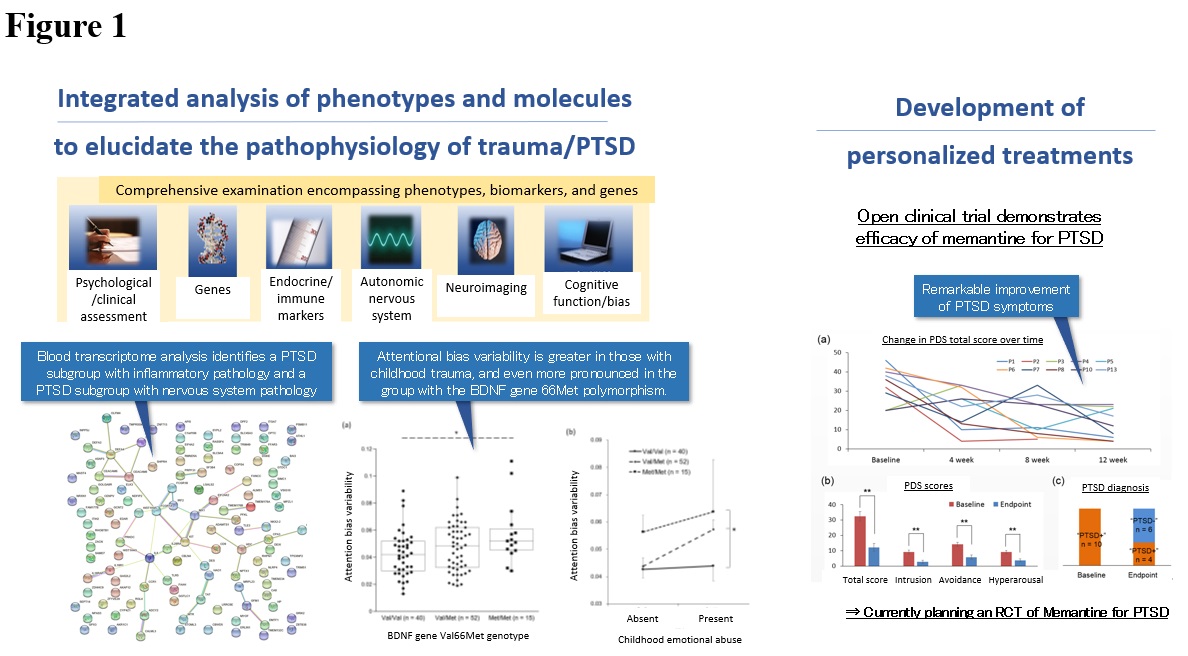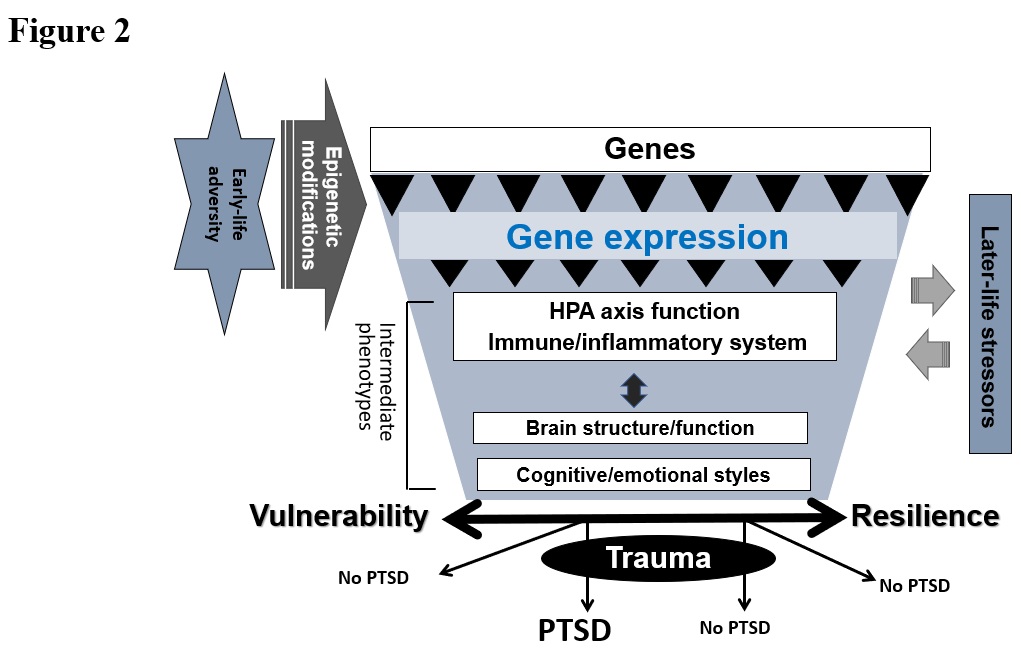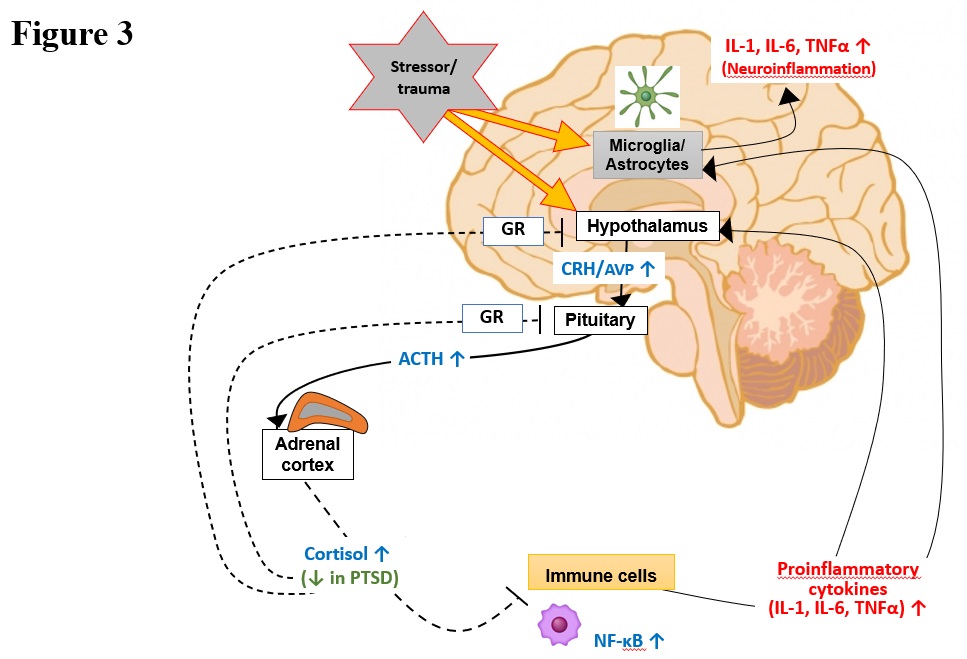Theme 2 Neurobiological studies of PTSD
Research Content
Posttraumatic stress disorder (PTSD) is a serious psychiatric condition associated with intense fear. PTSD can develop after traumatic events in which an individual experiences or witnesses a life-threatening event, suffers a serious injury, or is sexually violated. Individuals with PTSD have characteristic symptoms, including "re-experiencing" such as flashbacks, "avoidance" of memories and external situations related to the traumatic event, "negative alterations in cognition and mood" such as guilt, shame, distrust, fear, and anger, and "hyperarousal" in which the individual becomes tense, irritable, and alert. These symptoms tend to persist for a long time, and the affliction and social dysfunction of patients are often severe.
Our goal is to better understand PTSD through multifaceted and comprehensive research that encompasses psychological and biological methods, which can ultimately lead to the development of individualized treatment and intervention methods (Figure 1). To elucidate the etiology of PTSD, we are testing the stress vulnerability-resilience model focusing on gene-environment interactions (Figure 2). This hypothesis posits that the interactions of genetic predispositions and environmental factors, such as adverse childhood experiences, may result in stress vulnerability or resilience, which may increase or decrease the risk of developing PTSD when experiencing traumatic experiences later in life. We have been clarifying the etiology and pathophysiology of PTSD by examining in detail the relationship between genetic polymorphisms, gene expression, childhood maltreatment history, and cognitive function, with its focus on the hypothalamic-pituitary-adrenal axis and inflammatory system that play a central role in the stress response (e.g., Figure 3).
For a list of publications from this research project, please see the following link.
https://www.ncnp.go.jp/nimh/behavior/Department_of_Behavioral_Medicine/staff/hori_eng.html
Figure 1: Overview of our research project
To elucidate the etiology of PTSD, we have been conducting research encompassing detailed psychological/clinical assessments, cognitive testing, neuroendocrine, immune/inflammatory, and autonomic nervous system examinations, brain imaging, and genetic analyses. Endocrine biomarkers such as cortisol are examined using hair in addition to blood. In parallel with these etiological studies, we are also conducting clinical trials to develop novel treatments for PTSD.
Figure 2: Hypothetical model for the etiology of PTSD
There are underlying genetic factors, and when there is adversity in early childhood, epigenetic mechanisms such as DNA methylation can alter gene expression and cause abnormalities in the inflammatory system and HPA axis, which can affect the brain and cognition. Consequently, each individual's vulnerability will be determined, and vulnerable people may develop PTSD after trauma, whereas resilient people may not develop PTSD even if they experience the same trauma. Results from our research project have supported this hypothesis.
Figure 3: Dynamics of HPA axis and inflammatory system triggered by stress and trauma
There is a close interaction between the HPA axis and the immune/inflammatory system, with cortisol usually acting in an inhibitory manner on the inflammatory system, while inflammatory cytokines act to promote cortisol secretion. Given that individuals with PTSD tend to have low levels of cortisol, it is possible that the low cortisol can lead to an insufficient anti-inflammatory effect and therefore inflammation is enhanced rather than suppressed. Stress and trauma may cause neuroinflammation by activating microglia and astrocytes in the brain, either peripherally through an increase in the inflammatory system or directly.



